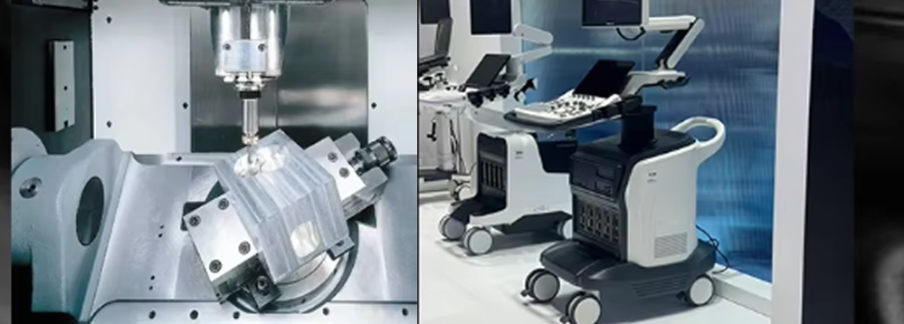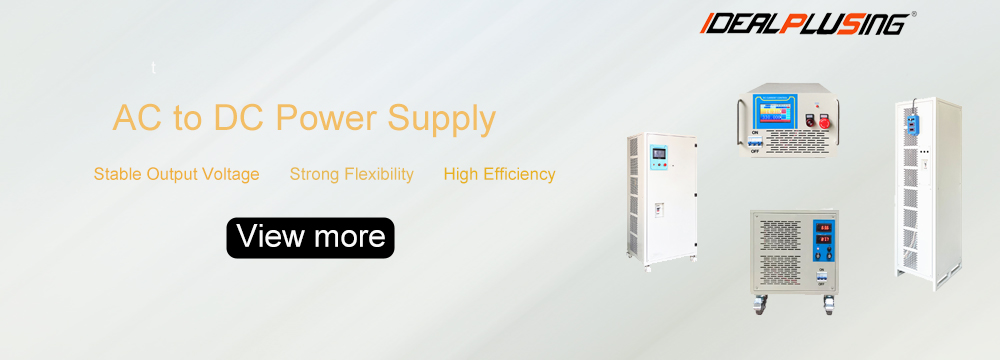Anodizing power supplies (also known as anodic oxidation power supplies) are core power equipment for metal surface treatment processes. The entire unit is treated with corrosion protection and is primarily used in the aviation, automotive, electronics, and construction industries. This equipment forms an oxide film on metal surfaces through an electrolytic reaction. It requires a DC or pulsed current with a control voltage range of 15V-500V. Equipped with an intelligent control system, the equipment supports voltage and current stabilization modes. Its square wave output reduces the film dissolution caused by temperature increases, preventing the expansion of the oxide film pores, significantly improving sealing quality, and enhancing the hardness, density, and yield of the oxide layer. Multiple protection features are built in, including overcurrent, overvoltage, and short-circuit protection. The high-frequency switching power supply utilizes IGBT/MOSFET devices, achieving conversion efficiency exceeding 90%.
1. Pulse Oxidation Power Supply - Introduction, Structure, and Applications
Pulse oxidation power supplies are power components that apply oxidation treatment technology to a wide range of power management applications. They feature high processing power, long life, high inverter efficiency, and exceptional durability. They are used in a variety of industries, including power tools, computer equipment, high-end lighting, and medical equipment. The following will provide a basic introduction to pulse oxidation power supplies, their typical structural features, and their applications.
1.1 Basic Introduction to Pulse Oxidation Power Supplies
A pulse oxidation power supply is a power component that can be used as either a DC/AC converter or a DC/DC converter. It primarily applies oxidation technology to power management applications. It boasts strong power handling capabilities, long service life, high inverter efficiency, and exceptional durability. It is used in a variety of industries, including power tools, computer equipment, high-end lighting, and medical equipment.
The operating principle of a pulse oxidation power supply is as follows: it uses a given type of oxidation electrode to achieve rapid switching and precise positioning of the electrodes, removing residual material between the electrodes. This allows the use of a pulsed electric field with a continuously varying voltage to react on the surface of the liquid being stimulated, converting low-energy electrons into high-energy electrons through an oxidation-reduction reaction.
2. Pulse Oxidation Power Supply Structure and Features
2.1. Structural Features
The pulse oxidation power supply utilizes a classic structural design, consisting of electrodes, a support structure, a reaction liquid container, and a bubble release mechanism. The control section is responsible for signal reading, the electrodes are responsible for reactant liquid activity, the support structure is responsible for positioning the electrodes and bubbles, and the release mechanism is responsible for suppressing the formation and release of water molecules.
2.2. Features
The pulse oxidation power supply features powerful processing power, long life, high inverter efficiency, and exceptional durability. It enables fast switching and precise positioning of electrodes, converting low-energy electrons into high-energy through oxidation-reduction reactions. Its advantages include ultra-short pulses, transient response, and controllability, far exceeding those of traditional power control devices.
2.2.1 Leveraging advanced inverter technology, the main control system utilizes unique multi-circuit control technology to ensure product reliability and high-precision control performance. Strict quality control and comprehensive protection features enhance product stability.
2.2.2 The main high-frequency transformer utilizes nano-based materials, with imported high-power insulated gate bipolar transistor (IGBT) modules as the primary power device. High-quality materials ensure high quality.
2.2.3 Advanced heat dissipation design and multiple complementary heat dissipation methods ensure high efficiency and stability.
2.2.4 Fully digital design enables more precise control. Support for bus control enables the establishment of a centrally controlled power supply system for easier management and improved efficiency.
2.2.5 Modular switching power supply design: Capacity expansion is achieved through redundant power supply systems, improving the reliability and availability of the power supply system (if one power supply burns out, the other automatically restarts without disrupting production), shortening repair and maintenance time and generating greater profitability for the company.
2.2.6 Comprehensive protection functions: Protection against phase loss, overvoltage, undervoltage, short circuit, overcurrent, overheating, and water shortages protects equipment.

3. Applications of Pulse Oxidation Power Supplies
3.1. Power Tools
The application of pulse oxidation power supplies in the power tool field continues to grow. They enable more precise control of power, improving power utilization, reducing costs, and effectively increasing overall production efficiency. Furthermore, their robustness and durability significantly enhance the reliability and competitiveness of the company's products.
3.2. Computer Equipment
Pulse oxidation power supplies are widely used in computer equipment. They can be used as both traditional DC/AC converters and more advanced DC/DC converters, significantly improving the reliability and flexibility of computer equipment. Their advantages include ultra-short pulses, transient changes, and controllable efficiency. They effectively reduce noise and inefficiency, improving computer stability and power efficiency, and lowering overall costs.
3.3. Others
In addition to the aforementioned applications, pulse oxidation power supplies are also widely used in high-end lighting, medical equipment, and other fields. Their use in electrical appliances provides comprehensive power regulation capabilities, improving product reliability while reducing overall costs, earning widespread customer praise.
4. What are the features of pulse oxidation power supplies?
4.1 Core to advanced inverter technology, the main control system utilizes unique multi-circuit control technology to ensure product reliability and high-precision control performance. Strict quality control and comprehensive maintenance features enhance product stability.
4.2 The main high-frequency transformer utilizes nanomaterials, with imported high-power insulated-gate bipolar transistor (IGBT) modules as the primary power device. High-quality materials ensure guaranteed quality.
4.3 Advanced heat dissipation design and multiple complementary cooling methods ensure high efficiency and stability.
4.4 Fully digital design enables more precise control. Support for bus control allows for a centrally controlled power supply system for easier management and improved efficiency.
4.5 The modular switching power supply design allows for capacity expansion through redundant power supply systems, improving the reliability and availability of the power supply system (if one power supply fails, the other automatically restarts without impacting production), shortening repair and maintenance time and generating greater benefits for the enterprise.
4.6 Comprehensive protection features: Protection against phase loss, overvoltage, undervoltage, short circuit, overcurrent, overheating, and water shortages protects the equipment.
5. Summary
The pulse oxidation power supply is a promising new component. It integrates oxidation technology and uses inexpensive, readily available, and environmentally friendly gases to process electricity, resulting in high power handling characteristics. It not only offers strong resistance to heat and high tolerance, but also offers cost savings, exceptional reliability, and durability. It is widely applicable in industries such as power tools, computer equipment, high-end lighting, and medical equipment, and is expected to become a next-generation power component.
Share our interesting knowledge and stories on social media














